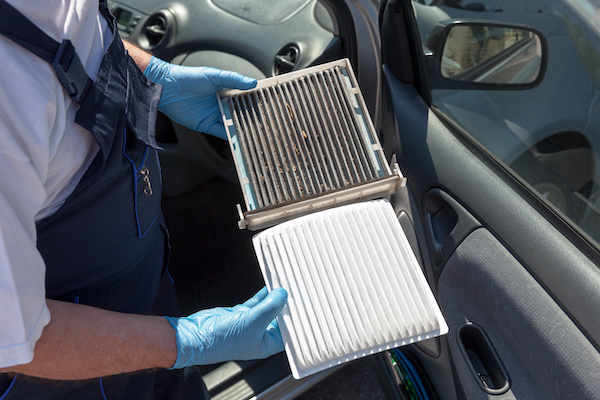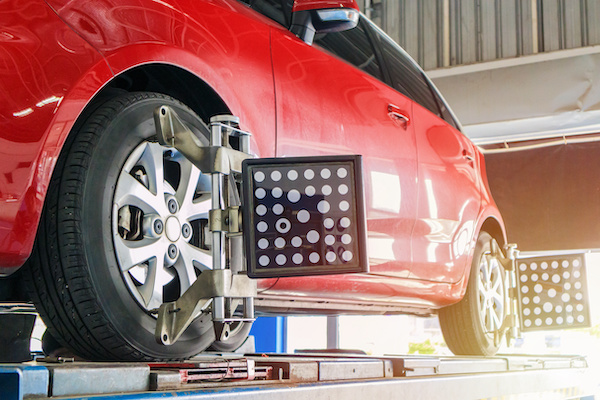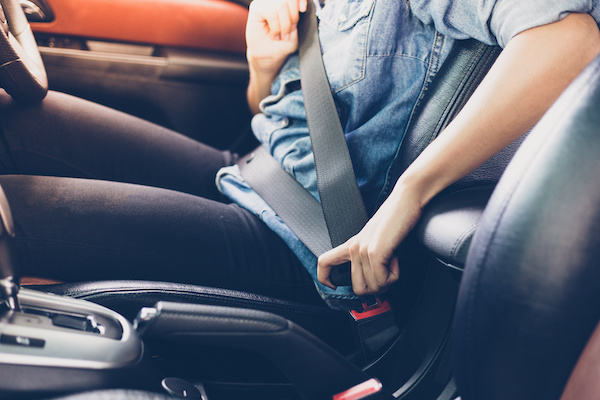Posted on 12/8/2021

Careful drivers who like to maintain a strict vehicle maintenance schedule may be curious about how often they should be changing the cabin air filter. Most car manufacturers recommend that you swap it out around every 15,000 miles. Whether you do it yourself or decide to bring it to Oswald Service Inc., we can get you started on your maintenance needs at your convenience. What Does the Cabin Air Filter Do The outside air moves through your car's heating, air conditioning, and ventilation system as you drive. As a result, it's likely to drag in pollen and other pollutants from the outside air. The cabin air filter plays the role of collecting and preventing these small particles from escaping into your vehicle. A dirty filter will reduce airflow with your climate control system and sometimes cause a lingering odor and dusty environment. How to Change Your Cabin Air Filter Changing a cabin air filter is inexpensive and straightforward. Here's how: Refer to your car ... read more
Posted on 11/5/2021

Happy Thanksgiving from our team at Oswald Service Inc! We hope you'll have a wonderful holiday experience with friends and family. With all the holidays coming up, it means there's going to be lots of travel. It can get crowded, and it can get wet or icy out there! If you plan on heading out of town in the next several weeks, we recommend that you check off some vital travel measures before hitting the busy roads. Be sure to have your vehicle inspected by professionals - Our service team at Oswald Service Inc. can help prep your car before traveling this holiday. You definitely don't want to be held back in a situation without a working vehicle! Getting a pre-trip check-up will guarantee that your car is ready to take on any fall/winter challenges that may come your way. And it will keep you and your family safe! Pack for the weather - It's going to get cold out there, so make sure you pack blankets, coats, socks, etc., to keep you warm wherever you go. Prep a ... read more
Posted on 10/4/2021

Many internal systems within your car work concurrently to keep it driving straight. However, factors like your external environment and driving habits may impact your wheels and knock them out of alignment. For instance, if you just went flying over a speed bump or hit a curb roughly, the wheels will become lopsided. And as a result, you may experience problems trying to maneuver your car. If you choose to ignore this problem, you may notice a significant blow to your car's performance and even a loss in fuel economy. Here are some of the telltale signs that you need a wheel alignment ASAP: Off Steering Wheel - An off-center steering wheel is a widespread symptom of misaligned wheels. If you feel like you have to grip the steering wheel super tight to go straight, please have your car inspected immediately. Vibrations - Misaligned wheels will sometimes be linked to strained tires. As a result, they will drag and cause your car to vibrate. Uneven Tire Wear - If you inspect your ... read more
Posted on 9/7/2021

Our first instinct whenever we hop in our vehicles is to buckle up. But have you ever stopped to think, "When did people start doing this" and "Were seat belts always in cars". Today, we will answer those questions and do a deep dive into the history of how seat belts became a norm. It all started in the late 1800s. The seat belt was first invented by an English engineer named George Cayley, but it was not intended for motor vehicles at the time. Alternatively, it was invented to assist stop pilots from falling out of their gliders. The first "seat belt," or lap belt intended for motor vehicle usage, wasn't patented until 1855 by American Edward J. Claghorn. He wanted to keep travelers safe, especially for those that depend on New York taxis. Unfortunately, seat belts weren't widely popular until the mid-1930s, when seat belts were tested for safety. After many tests and studies, doctors finally urged vehicle manufacturers into addin ... read more
Posted on 8/3/2021

Most people seem not to notice that all of those short trips that we sometimes take can significantly impact your vehicle. Frequent short trips may be causing harm to both your engine oil and battery. If your lifestyle demands lots of short-distance drives, please learn how to care for your vehicle to prevent premature wear. ENGINE OIL As most of us know, engine oil is typically a thick and viscous fluid. But as your engine heats up, the oil warms up, allowing it to flow smoothly and lubricate the engine's internal components. On a short drive, your motor may not reach its optimal temperature. This lack of heat can hinder your motor oil from lubricating your engine's components properly. Additionally, oil also requires heat to rid itself of contaminants such as condensation and other combustion byproducts. When your engine doesn't come to an optimal temperature, the build-up isn't cleaned out of the oil, compromising its reliability and performance. You shoul ... read more
Posted on 7/3/2021

If the Idaho heat is getting to you, it is likely affecting your car too. Counter to public knowledge, the hot summer temperatures have a more dangerous impact on your vehicle's battery than the freezing temperatures of winter. To truly understand the damage of overheating your battery, you first need to know how it functions within your car. What Does Your Car Battery Do? Your car's battery is an electrochemical device made out of electrodes that store an electrical charge. The battery is encased with sulfuric acid, and chemical reactions occur within the battery case to create electricity flowing throughout the car. In other words, it creates a current that is needed to start your car and power up the electrical features of your vehicle (radio, lights, seating adjustments, etc.). How Does Heat Affect the Battery? Heat can have numerous adverse effects on your battery. Whenever your car is exposed to temperatures higher than 80 degrees Fahrenheit, it ... read more
Posted on 6/8/2021

We are big pet lovers at Oswald Service, Inc., which is why we want to share this list of Do’s and Don’t when traveling with your furry friends. Do: Secure them properly in your vehicle. While it is best to get the most enjoyment out of your road trip, consider their danger if left unrestrained. Your animal could lean too far out the car window or perhaps even jump out! Oh-no! Sudden stops can also send your furry friend flying. There are multiple options to keep your pet(s) secure, such as bringing a kennel or doggie car seat. There are also special harnesses made that attach to your vehicle’s seat belt. Don’t: Assume you are prepared. Undoubtedly, there are some things you will forget to pack for your pup. It always helps to make a list of items to pack in advance. Did you bring enough food? Water? Consider bringing toys to keep your pet entertained. Lastly, set aside some money for prec ... read more
Posted on 5/17/2021
.jpeg)
The fuel pump's primary purpose is to deliver fuel from the gas tank to the engine. When it fails, the engine cannot run, causing significant performance issues. While fuel pump failure is common in older vehicles, it is not easy to replace or repair. However, if you know the early signs of fuel pump failure, you can fix the issue before it worsens. Here are some of the early signs and symptoms of fuel pump failure. Engine Surges When your fuel pump starts to wear out, the fuel lines in your pump become inconsistent. When this happens, you may fund your car suddenly accelerating for a few minutes, even without pressing on the gas pedal. This is known as engine surges, and it should alert you that your fuel pump needs to get replaced. Difficulty Starting Your Vehicle Fuel pumps run whenever you ignite your car's engine. With time, they wear out and weaken. It may still pump fuel to the engine, but at a slow rate, resulting in difficulty starting your vehicle due to lack of ... read more
Posted on 4/19/2021
.jpeg)
Each fluid in your vehicle has a unique job and they're all important to keep your car running properly. Sometimes dirt or other contaminants can get in there so they need to be exchanged to make sure your car is getting the most out of them as possible. 5 Fluids You Need To Exchange 1. Oil It used to be recommended that everyone changes their oil every 3,000 miles but since lubrication has improved since then, it is now recommended to get an oil change every 5,000 to 7,500 miles. It also depends on the type of oil you're using so make sure you check with a mechanic. 2. Transmission Fluid When you need to replace your transmission fluid can vary a little bit depending on the make and model of your car but you'll want to replace it somewhere between every 50,000 and 100,000 miles. This is important because you don't want to get stuck having to repair your transmission, which is a costly ordeal. 3. Coolant Make sure you keep on top of your coolant because if your c ... read more
Posted on 3/12/2021
.jpeg)
An overheating vehicle is a reason to worry. Apart from making the ride uncomfortable, it could be a sign or a trigger to further vehicle damages. Imagine driving through the summer heat with absolutely no way to cool your temperatures. Such situations are dangerous for you and the passengers. An overheating vehicle means that the engine is running extremely hot. It threatens your safety, and there is a need to have the issue diagnosed by ASE certifies mechanics to determine the cause of the overheating. Different factors might trigger the engine to overheat. They include; A leak in the cooling system A cooling system in the car is meant to keep the engine temperature down. Leaks, blockage of pumps, and other malfunctions in the colling system might affect the coolant's functioning. The coolant fails to circulate properly, causing overheating in the engine. When the coolant is leaking, it lowers the level of the antifreeze. Driving in low levels of antifreeze during cold seasons ... read more